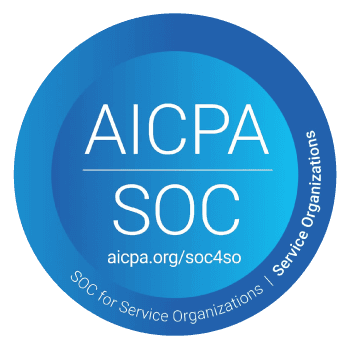RPA for Financial Services: A Practical Guide to Financial Workflow Automation
Publish Date
Sep 2, 2025
Financial teams are under pressure to close faster, reduce errors, and surface insights on demand - all while juggling legacy systems and spreadsheets. This guide explains how financial workflow automation (powered by RPA and computer vision) streamlines the work you do every day: RPA in accounts payable, bank reconciliation automation, and automated financial reporting. You’ll find practical examples, evaluation criteria, and an implementation roadmap tailored to finance leaders.
What is Financial Workflow Automation?
Financial workflow automation uses software robots (RPA) and rules to execute repeatable, rules-based tasks across your finance stack - ERP, bank portals, vendor systems, and spreadsheets. The goal isn’t just speed; it’s accuracy, audibility, and control. Automations run with validation checks, log every step, and hand off exceptions to humans with context.
What You Gain:
Shorter cycle times across AP, reconciliation, and reporting
Fewer manual touches and copy-paste errors
Stronger audit trails and policy compliance
More time for analysis and decision-making
Want the “done-for-you” version? See how Wrk delivers fully managed finance automations tailored to your processes.
RPA in Accounts Payable: From Invoice to Payment
AP is a prime target for financial workflow automation because the steps are predictable, documented, and heavily rule-driven. RPA handles the high-volume busywork so your team can focus on exceptions and vendor relationships.
Typical automation flow (end-to-end)
Capture - Pull invoices from email, EDI, vendor portals, or SFTP; apply OCR for PDFs/images; normalize formats.
Validate - Check supplier master, PO, line totals, dates, taxes, currency, GL coding, and cost centers; detect duplicates and fraud flags.
Match - Perform 2- or 3-way match against POs and receipts; apply tolerances by vendor, item, or category.
Route - Auto-approve clean items; push exceptions (price/qty/tax/missing PO) to the right approver with screenshots and data highlights.
Post - Create and post AP vouchers to the ERP; queue payment runs per policy (terms, discounts, approvals).
Reconcile & archive - Mark paid, attach remittances, archive with a searchable audit log and retention rules.
Quick wins (fast ROI)
Auto-triage invoices by vendor, spend category, or risk score.
Auto-code recurring invoices (rent, utilities, SaaS) based on learned patterns.
Dynamic discounting prompts on early-pay opportunities.
Exception queues with evidence (screenshots, line-level diffs) to cut back-and-forth.
KPIs to watch: first-pass yield, average cycle time, exception rate, discount capture %, duplicate payment prevention, cost per invoice.
Bank Reconciliation Automation: Faster, Cleaner Month-End
Manual reconciliations slow the close - especially across multiple bank accounts, entities, and currencies. Bank reconciliation automation ingests statements, applies matching rules, and isolates true exceptions with the evidence attached.
What gets automated
Statement ingestion - Pull statements from bank portals or SFTP; support common formats; schedule loads.
Multi-criteria matching - Amount, date variance, reference/description normalization, merchant/issuer rules; configurable tolerances.
Reconciling entries - Auto-create journal entries for bank fees, FX differences, interest; route approvals as needed.
Exception buckets - Categorize unmatched items (timing, missing documentation, unknown payer) with escalation paths.
Roll-ups - Consolidate reconciliations across entities/regions; produce status dashboards and sign-off trails.
Outcome
Hours saved every close with continuous reconciliations (not just at month-end).
Consistent policy application via standard rules and tolerances.
Audit-ready documentation with line-level trails, approvals, and timestamps.
KPIs to watch: % auto-matched, exceptions per 1,000 transactions, time-to-reconcile, aging of open items, number of manual journals.
Automated Financial Reporting: Close with Confidence
Ship reporting packs your CFO and auditors can trust. Automated financial reporting assembles data from ERPs, banks, subledgers, and spreadsheets, validates it, and publishes on schedule - without last-minute spreadsheet heroics.
Examples
Daily cash and working capital snapshots.
Month-end P&L, balance sheet, cash flow with auto-generated variance notes.
Revenue recognition schedules and deferred-revenue roll-forwards.
Budget vs. actuals with drill-downs back to source transactions.
Controls you'll like
Pre-publish checks for out-of-balance conditions, missing accounts, or stale data.
Versioned outputs & lineage so you can trace every number back to source.
Scheduled delivery (PDF, Excel, Looker Studio, Power BI) to stakeholders with access controls.
KPIs to watch: report timeliness, manual touch count, variance explanation coverage, data quality defect rate.
Financial Workflow Automation vs. DIY Macros
Macros and scripts help within a single app - but they’re brittle across systems and hard to govern. Financial workflow automation spans ERPs, portals, and spreadsheets - even without APIs - and comes with the reliability layer finance needs.
Why Automation Wins Over Macros
Cross-system execution - Web portals, desktop apps, and remote sessions (RDP/Citrix), not just one workbook.
Resilience to change - Computer vision and robust selectors survive UI tweaks that break macros.
Operational guardrails - Monitoring, retries, alerting, and audit logs baked in.
Security & governance - Credential vaulting, roles/permissions, segregation of duties.
With Wrk, you also get a fully managed delivery model: we design, run, and maintain the workflows with SLAs and continuous improvement - no extra headcount required.
Build, Buy, or Fully Managed?
Build in-house if you have RPA engineers, a governance model, and bandwidth to operate bots 24/7.
Buy software if your team can shoulder configuration, monitoring, and break-fix long-term.
Choose fully managed services if you want outcomes without running a platform. Wrk captures your process, builds a custom automation, runs it, and keep it healthy with usage-based pricing, no per-bot licenses.
Decision drivers: time-to-value, total cost of ownership, hiring/retention risk, compliance requirements, and how many non-API systems you depend on.
If the goal is fewer late nights and cleaner numbers, the path is financial workflow automation that actually ships. When you partner with Wrk to automate your processes, you’ll close faster with fewer errors, and audit-ready visibility across AP, bank reconciliation automation, and automated financial reporting.
With Wrk’s fully managed services, you don’t hire specialists or babysit bots - we capture your process, run it, and keep it healthy. Start with one high-ROI workflow and watch cycle time drop in weeks, not quarters. Ready to see it on your stack? Book a 30-minute walkthrough and watch your process run end-to-end.








